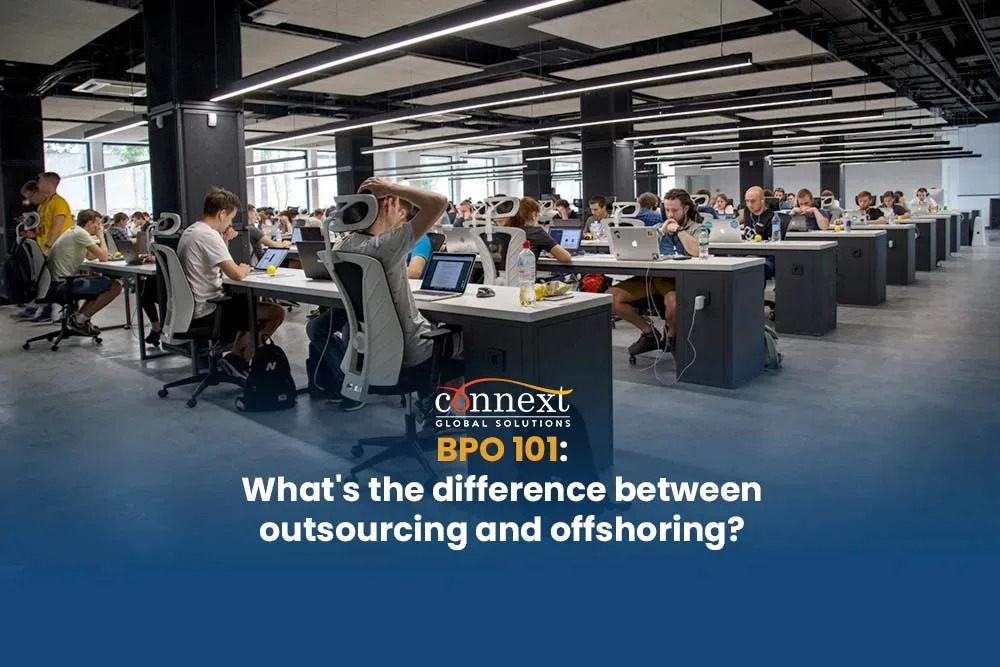Key Takeaways:
- Clear definitions matter: Outsourcing involves hiring an external partner (domestic or international) to handle specific processes, while offshoring refers specifically to relocating operations or facilities to another country
- Different scopes of control: Outsourcing allows you to delegate non-core tasks without managing operations directly; offshoring—especially captive offshoring—does require direct investment, management, and infrastructure overseas
- Ownership and operation vary: With outsourcing, responsibilities lie with a third-party vendor; with offshoring, you may keep full ownership and oversight of the offshore unit—even while benefiting from cost arbitrage
- Combined model—offshore outsourcing—offers flexibility: This common approach uses third-party providers in a lower-cost country, blending offshoring cost advantages with outsourcing convenience
- Strategic considerations influence choice: Companies choose between outsourcing, offshoring, captive operations, nearshoring, or hybrid models based on desired control, cost savings, talent access, time zones, cultural fit, and regulatory ease .
Businesses all over are increasingly facing challenges with limited resources and growing demand for services. In order to stay competitive in today’s market, it’s important to be creative in finding ways to ensure your company survives and thrives.
Outsourcing and offshoring are two business practices that can be helpful in increasing efficiency while reducing costs. While they are often used interchangeably, each involves different processes and challenges. If you’re considering outsourcing or offshoring your operations, this guide will help you understand when each option is appropriate—and how to make sure both parties benefit from your business relationship moving forward.

Outsourcing and offshoring are two different concepts.
Outsourcing is the process of transferring business activities to an external service provider. The goal of outsourcing is to reduce costs, increase efficiency, and improve quality by leveraging the specializations of the outside service provider. Outsourcing can happen within the same country. For example, a California-based company that pays for the services of a freelance social media manager in New Jersey is a form of outsourcing.
Offshoring, on the other hand, involves transferring business activities to an external service provider in a different country. Offshoring is often used as a strategy for reducing costs when labor rates are lower in another country than they are in your own country or location.
Let’s dive more into these two business processes.

Outsourcing means shifting business operations to another company or even an individual contributor.
Outsourcing is a way of reducing costs and increasing efficiency. SMEs and start-ups may choose this option if they want to save costs.
Companies may also outsource work in order to improve service quality. They will have access to agents with a more specialized knowledge of a particular subject. For example, a start-up advertising agency may choose to focus on providing their firm’s services. They may then choose to outsource other business processes, such as hiring and accounting management, to another firm(s).
Outsourcing is limited to the processes that you choose to outsource, while offshoring can cover multiple departments and processes.
With outsourcing, you’re able to outsource only the processes that you choose to outsource. This can be a great way of getting things done without having to hire additional employees or make expensive upgrades in technology. However, this option is limited because it does not affect other departments or processes within your company.
This is because outsourcing typically focuses on the delegation of a particular task to a third-party provider, which again, could refer to a company or an individual contributor (e.g., an accounting firm that specializes in outsourced work or a freelance writer hired on a per-project basis).
Another example is when a company decides it wants one part of its production process outsourced while keeping another part in-house; therefore making sure that both parts continue working together seamlessly despite being on different continents/countries.
Having said that, most companies looking to benefit from outsourcing tasks usually avail of accounting and payroll services, legal services, and HR management.

Offshoring means shifting business operations to another country.
Since the services come from outside the country in offshoring, a lot more processes are involved than when you try to outsource locally, making offshoring more complex.
Offshoring can even be divided into two. Depending on how far or near the servicing company is, the term offshoring, also called farshoring,technically only refers to outsourcing offshore. When the servicing country shares a border with the client company, that’s nearshoring.
Offshoring allows you to be more closely involved in managing the outsourced processes, while in outsourcing you have less control over what happens within the service provider organization.
Outsourcing is when you hire an external company to perform work for you, but you don’t have any responsibility for the operations of that company. For example, if we were to outsource our accounting department to another firm, we wouldn’t need to worry about hiring or firing accountants; we would only have oversight over their work product and how efficiently it was delivered. This means that the outsourced process has more control over what happens within its organization than an outsourced process would.
We can think of outsourcing as having less control over the outsourced processes than in-house employees who work directly for your company on similar activities: they will likely be more efficient because they are dedicated full time. However, if things go wrong – such as if someone gets sick or quits unexpectedly – this could mean extra costs for training new people before getting back up to speed again.
In the case of companies dedicated to offshoring services, part of their offerings may involve hiring, training, and managing dedicated service providers who will work on your tasks.
However, your input as a client will still be highly valued when it comes to employee retention and even compensation. You could also set specific requirements that your providing company will do their best for your satisfaction.
Understanding these differences between offshoring and outsourcing can help your business avoid costly mistakes.
- Offshoring is more flexible than outsourcing.
- Outsourcing is often more expensive than offshoring.
- Offshoring is more involved than outsourcing.
- Offshoring is more effective than outsourcing, but it’s also a riskier strategy because your company must figure out how to manage employees at a distance and make sure operations continue as usual.
Conclusion
Offshoring is a way to cut costs in your business, but it comes with many risks and responsibilities.
If you decide to outsource certain processes or departments, make sure you understand exactly what kind of services are being provided before committing to anything long term. It’s also important to keep track of the costs involved so that you can make informed decisions about whether outsourcing is right for your company in the first place.
Outsourcing means hiring a third-party provider—either domestically or abroad—to handle specific business tasks. Offshoring refers to relocating an entire operation or function to another country, regardless of ownership
Offshore outsourcing combines both strategies: you contract an external provider in another country to run your business functions—enjoying both geographical cost advantages and vendor flexibility .
Offshoring—especially when operating a captive unit—allows more direct oversight and quality control. In outsourcing, control is shared with the third-party vendor, which requires strong governance and SLAs
Offshoring carries risks such as data/IP security, communication/cultural gaps, hidden costs, and management complexities. Outsourcing also poses challenges like quality control, security issues, and vendor dependency that must be managed.
References
“Offshoring, Nearshoring, Onshoring & Outsourcing – InterVenture.” InterVenture, https://www.facebook.com/InterVenture, 14 May 2019, https://www.interventure.info/blog/offshoring-nearshoring-onshoring-outsourcing-characteristics-differences/.
Peatman, Bill. “The Difference Between Offshoring vs. Outsourcing.” Managed Virtual Assistant Service for Professionals | Prialto, https://www.prialto.com/blog/offshoring-vs-outsourcing.
“The Difference Between Offshoring and Outsourcing | ASW Blog.” Aswhite Global, https://www.facebook.com/ASWhiteGlobal, 31 May 2021, https://aswhiteglobal.com/the-difference-between-offshoring-and-outsourcing/.









